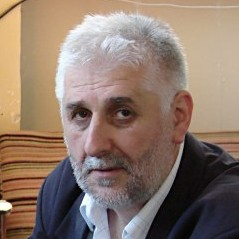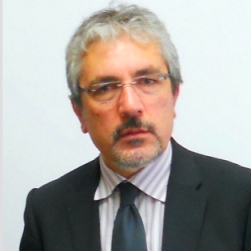Selected Papers from the 18th International Conference Research and Development in Mechanical Industry (RaDMI-2018)
A special issue of Machines (ISSN 2075-1702).
Deadline for manuscript submissions: closed (31 March 2019) | Viewed by 42725
Special Issue Editors
Interests: production engineering; machining; informatics; statistics
Special Issues, Collections and Topics in MDPI journals
Interests: mining; mechanization; environment; secondary raw materials; treatment and recycling of industrial and mining wastes
Special Issues, Collections and Topics in MDPI journals
Interests: applied mechanics; mechanical systems; mechanical vibrations; tribology
Special Issues, Collections and Topics in MDPI journals
Special Issue Information
Dear Colleagues,
The 18th International Conference, "Research and Development in Mechanical Industry" (RaDMI-2018) (Web site: http://www.radmi.org/), will be held 13–16 September, 2018, in Vrnjačka Banja (Serbia), and is organized by the publishing house "SaTCIP" Publisher Ltd. from Vrnjačka Banja (Serbia).
More than 70 participants from Bosnia and Herzegovina, Bulgaria, Croatia, Greece, Italy, Montenegro, Romania, Russia, Serbia, Slovenia, Ukraine, and others, have applied to the conference.
All papers will be printed in the proceedings in hard copy and on CD-ROM in an electronic format.
All original and research papers from the 18th International Conference RaDMI-2018, which successfully pass the review process, will be published in the journal Machines (ISSN 2075-1702) (Website: https://www.mdpi.com/journal/machines/) in this Special Issue, 31 March 2019. Machines is indexed in the following citation databases: Scopus from Elsevier (Website: https://www.scopus.com/), ESCI (Emerging Sources Citation Index) as part of WoS (Web of Science) from Clarivate Analytics Corp. (Website: https://www.clarivate.com/products/web-of-science/), INSPEC from IET (Institution of Engineering and Technology) (Website: http://www.theiet.org/resources/inspec/), GS (Google Scholar) (Website: http://scholar.google.com/), etc.
This Special Issue aims to bring together papers that report on recent advances and challenges in addressing problems and designing new solutions for the improvements of tools, equipments, and technologies in manufacturing engineering. Original contribution papers are expected with contents that present successful solutions to new problems in manufacturing systems. We believe that this Special Issue will be useful and informative to both researchers and practitioners. We also hope to deliver readers promising new ideas and directions for future developments in the field of manufacturing engineering.
Suitable topics for this Special Issue include, but are not limited to:
- Research and development of manufacturing systems;
- Tools, equipments and technologies in manufacturing engineering;
- New materials and product design;
- Tribology;
- Maintenance and effectiveness of technical systems;
- Quality management, sustainable development and management in mechanical engineering;
- Application of information technologies and electronics in mechanical engineering.
Prof. Hon.D.Sc. Predrag Dašić
Prof. Dr. Ivica Ristović
Prof. Dr. Domenico Guida
Guest Editors
Manuscript Submission Information
Manuscripts should be submitted online at www.mdpi.com by registering and logging in to this website. Once you are registered, click here to go to the submission form. Manuscripts can be submitted until the deadline. All submissions that pass pre-check are peer-reviewed. Accepted papers will be published continuously in the journal (as soon as accepted) and will be listed together on the special issue website. Research articles, review articles as well as short communications are invited. For planned papers, a title and short abstract (about 100 words) can be sent to the Editorial Office for announcement on this website.
Submitted manuscripts should not have been published previously, nor be under consideration for publication elsewhere (except conference proceedings papers). All manuscripts are thoroughly refereed through a single-blind peer-review process. A guide for authors and other relevant information for submission of manuscripts is available on the Instructions for Authors page. Machines is an international peer-reviewed open access monthly journal published by MDPI.
Please visit the Instructions for Authors page before submitting a manuscript. The Article Processing Charge (APC) for publication in this open access journal is 2400 CHF (Swiss Francs). Submitted papers should be well formatted and use good English. Authors may use MDPI's English editing service prior to publication or during author revisions.
Keywords
- Mechanical engineering
- Manufacturing systems
- Machining
- Product design







